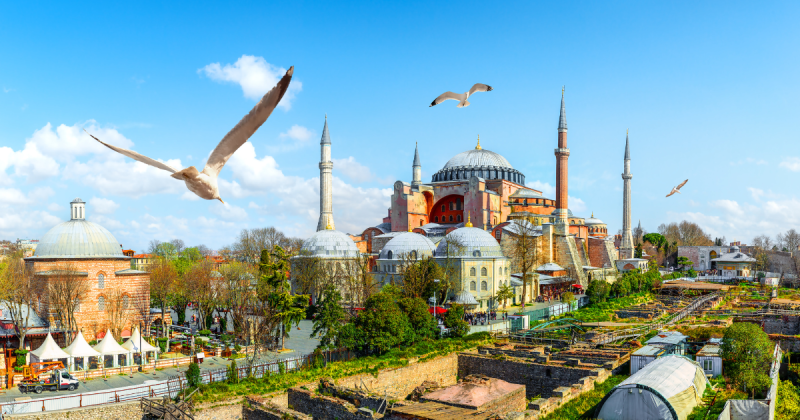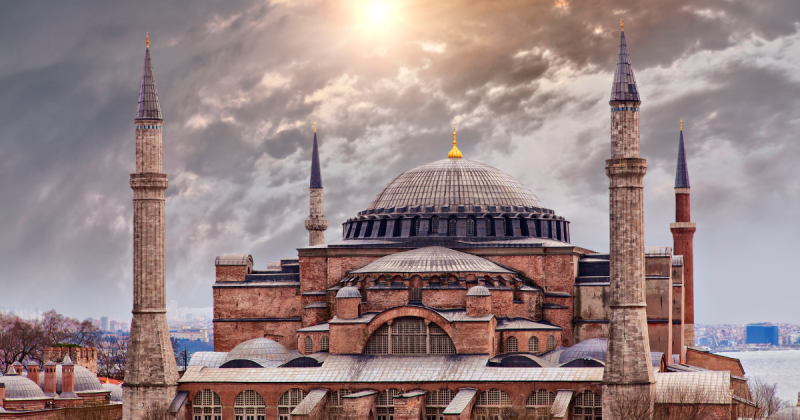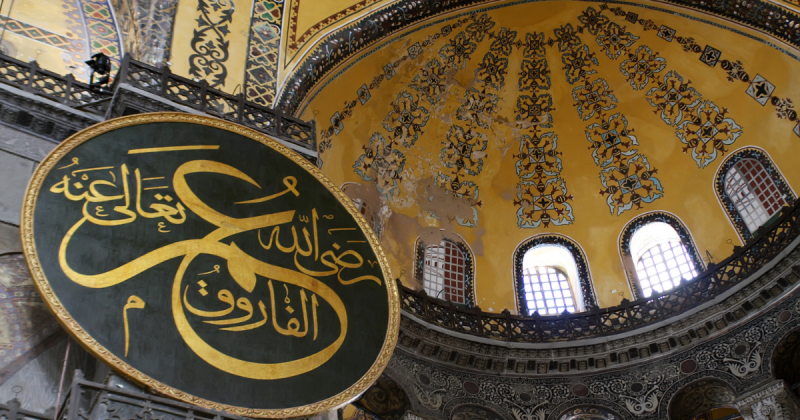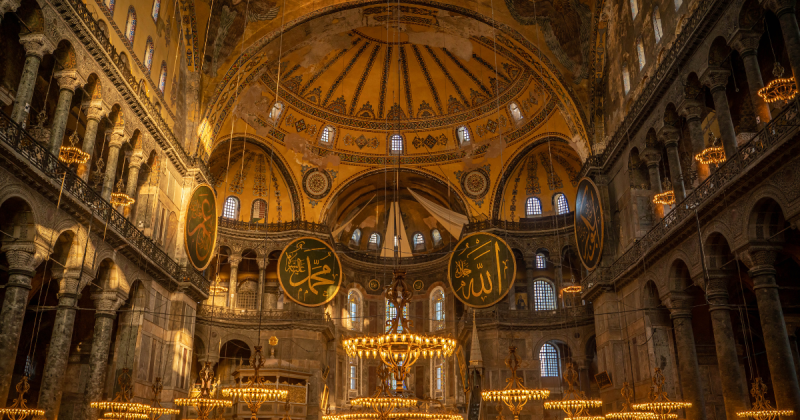
Lets uncover the profound importance of Hagia Sophia to the Muslim world. Delve into its captivating history and admire its remarkable architectural beauty. Truly, the city of Istanbul remains an enigmatic saga that spirals through the winding corridors of time – from its inception as a major economic engine in world trade to its current blossuniong as a cultural landmark, Istanbul is a story that has seeped through various generations.
With its rich, complex culture, grand history and vivid streets, Istanbul breathes a life of its own as it stands as a monumental point in the world. Stretching back to the bronze age, Istanbul has always retained its place in world history as a fertile breeding environment for culture, politics and civilization.
This article takes you down the spine-tingling paths of legendary tales that continue to create an elusive aura imaging Istanbul as an enigmatic tapestry of mystery and history. Welcome to our journey that takes us through Istanbul’s sojourn – from being the captivating epicenter of the Byzantine Empire to being honored by the Holy Prophet Muhammad. Brace yourself for a rollercoaster with echoes back to time that unravel the city’s hidden most stories.
The Rich History of Hagia Sophia and its Connection to Islam

The Hagia Sophia is one of the most famous landmarks in Istanbul’s history. It was built in the 6th century AD by the Byzantino Emperor Justinian and has undergone countless events over the centuries. It started its life as a Christian cathedral and eventually was converted into a mosque, which underlines Islam’s connection to it.
Its transformation started in 1453 when the Ottoman Turks conquered the city of Istanbul and turned this Christian cathedral to a mosque. Mehmed the Conqueror turned it into a mosque but he understood the significance of this place from both a religious and symbolic aspect. He added minarets from all four sides, made extensive changes and decorated the building and below the surroundings based on Islamic traditions.
The mosque was a key place of worship for Muslims for almost five centuries. It was a symbol of the Ottoman’s power and splendour and attracted both Muslim and non-Muslims due to its immense dome and mosaics. It had the appearance of Islamic features but it also included the original Byzantine handwriting. This duality created a unique appearance and shows the history of two large world religions .
In the early 20th century, Hagia Sophia became a symbol of change. The founder of modern Turkey Mustafa Kemal Ataturk transformed the building into a museum. This was a sign of a new, more secular country. Nevertheless, in recent years, the issue of the place of worship returned again. In 2020, Hagia Sophia became a mosque again – what sparked both joy and controversy. Its rich past shows how the cultures and the religions have intermingled over the centuries.
Today Hagia Sophia is a symbol of Istanbul and its culture – people from all around the world visit it just to see this marvellous architecture and understand the country’s complex history.
Influence of Hagia Sophia on Islamic Architecture and Culture

The Hagia Sophia is a majestic testament to Istanbul’s history as magnificent domes and breathtaking mosaics. Initially constructed as a Christian cathedral in the 6th century, later converted into an Islamic mosque. The architectural mastery of Hagia Sophia had a significant influence on Islamic culture and architecture and its impact on the heritage of the city is unequivocal. The grandeur of the Hagia Sophia’s design, spanning a massive central dome and intricate mosaics and frescoes in the interior, served as inspiration for later Islamic architectural marvels.
The sheer scope and magnificence of the cathedral-mosque’s construction led to the development of a unique style that integrated features of both Byzantine and Islamic design. As a result, numerous mosques built in Istanbul bear resemblance to Hagia Sophia, featuring soaring minarets, expansive courtyards, and large prayer halls that draw from the Byzantine cathedral-mosque.
Furthermore, the conversion of the Hagia Sophia into a mosque played a crucial role in shaping the culture of Istanbul. The mixing of Islamic features into a Christian substrate created a unique blend of two magnificent architectural styles. This also applied to other forms of expression, including painting, calligraphy, and music.
While the original mosaics of the Christian cathedral were plastered over and the extensive complex featured more humbly designed detailed calligraphy and Islamic patterns. As a result, the Hagia Sophia shaped Turkish culture. The Hagia Sophia continues to be a symbol of Islamic architecture around the world as calls continue for its return to Islamic worship. However, the influence of Hagia Sophia on Istanbul is undeniable.
Hagia Sophia and Prophet Mohammad’s Heritage

Legends, like other cultural elements, were transferred “orally” from generation to generation in the oral culture environment before the invention of writing. with the invention of writing, they became part of the written sources and preserved and transferred to the next generation, especially with the “storyteller history” understanding. For this reason, one can find all kinds of legends about great and important events together with manuscripts and the history itself in that Istanbul and conquestion located Hagia Sophia.
One night, Gabriel invites Muhammad to the ascension. Gabriel and Muhammad begin to travel around the heavens. They also enter Firdevs paradise. There they see the maqam which is like a mosque. There are forty ruby pillars inside this building, the interior is covered with emerald and turquoise, the floors are made of silver and the outside courtyard is decorated with various ornaments on crystal and Kevser water constantly flows in the pool made of gold and silver rings. It is said that those who enter here do not want to leave ever.
Angel Gabriel said: “Oh, Muhammad! Allah created that position for your Ummah. They call it Camiü’l-Kübra. There is a city surrounded by the sea from three sides and land from one side. There is a place of worship in Kostantiniyye, a magnificent position called Mosque of Sughra (Hagia Sofia). Your Ummah will come and worship in it”. Angel Gabriel went silent afterwards. When Muhammad heard it from Gabriel, he thanked Allah and went to see and watch that nice position as much as he wanted.
After giving thanks to Allah, Muhammad remembered the beautiful position before his conversation with Allah. At that moment, Allah said: “Oh, Muhammad! If a person prays a two-rakat salah in the Mosque of Sughra and perform the salah with legitimate intention then I shall donate the spiritual reward to him on earth. Whoever prays in the mosque of Hagia Sofia for forty days I am giving the spiritual reward of four prophets. The first is Adam, the second is Noah, the third is Abraham and the fourth is you Muhammad!” Allah said.
After saying goodbye to Gabriel, Muhammad came down from the ascension . Muhammad told his friends everything he saw. After hearing this, his friends fell in love with this place and one by one wished to enter the beautiful place and pray before death takes them.
Also we recommend that you visit Hagia Sophia at least once in your life too! You can also learn more about the other legends of Hagia Sophia here.

